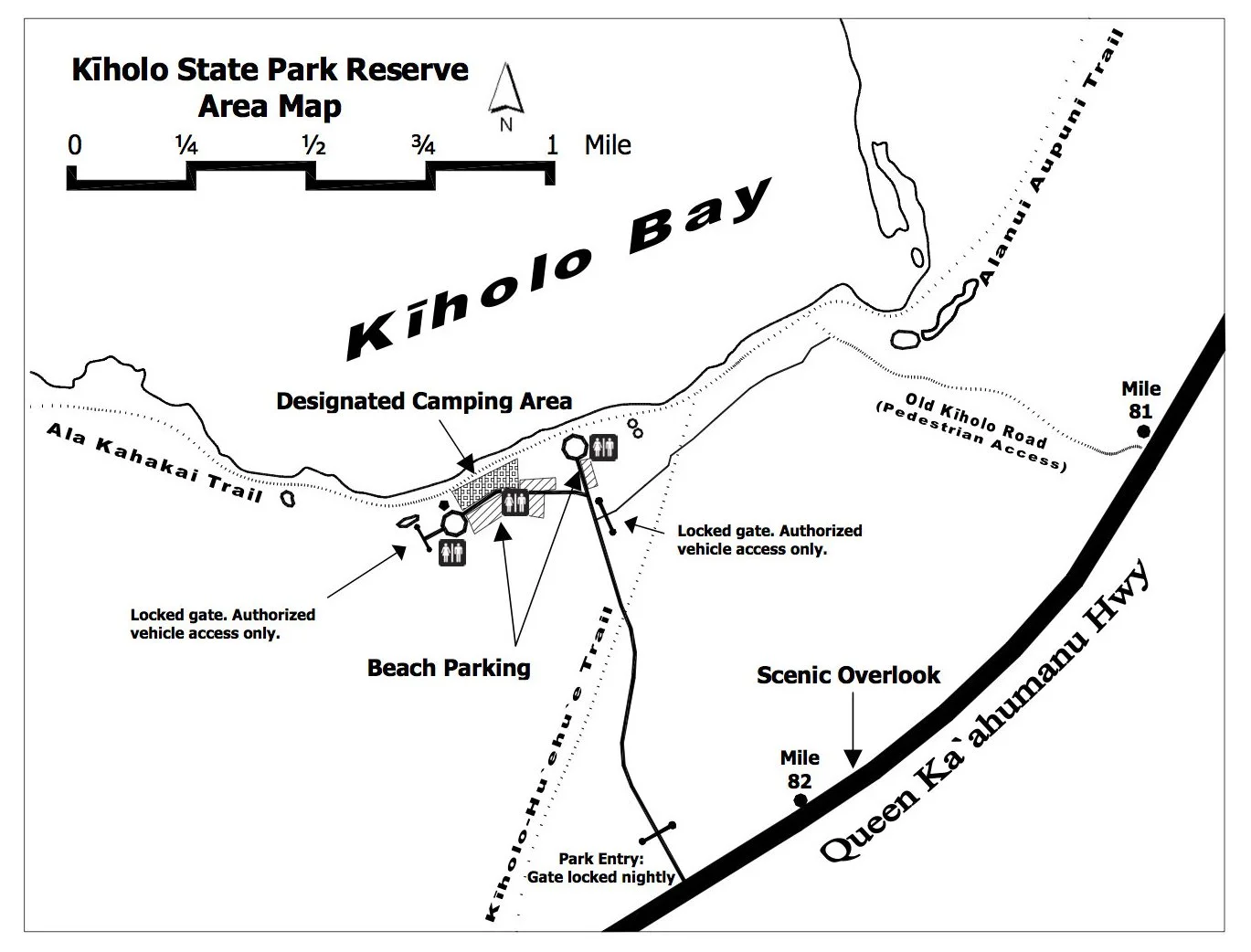Day Use - What to Know Before You Go
Keep in Mind:
Park hours are from 7 a.m. to 6:45 p.m.
There is no potable water or showers. Bring your own water.
No animals are allowed in the park, including dogs with the exception of service dogs properly identified with paperwork and leashed.
-
ʻĀina Momona - Fertile Lands Which Sustain Life
The environmental work at Kīholo Bay, led by Hui Aloha Kīholo, focuses on preserving and restoring the area's unique natural ecosystems. This involves protecting the region's anchialine pools, wetlands, and coastal areas, which are vital habitats for native species. Their efforts include removing invasive species, promoting native plant growth, and managing water resources to maintain a healthy and sustainable ecosystem.
The organization also emphasizes community involvement in conservation, offering educational programs and hands-on stewardship activities that invite volunteers and visitors to participate in caring for Kīholo. By engaging the community, they aim to ensure the long-term health of Kīholo’s environment and cultural significance.
For more details, you can visit the Hui Aloha Kīholo environment page.
-
Be mindful of the footprint you make on Kiholo - enhance the place, never harm.
Kiholo is one of the last undeveloped bays on the North Kona Coast and is home to wild animals. If you see any wildlife, keep your distance and respect their space. Sea Turtles and Monk seals are endangered species and it is illegal to approach them.
Hawaii State law protects lava and water caves by prohibiting entrance to them. These caves are archeologically, culturally, and ecologically sensitive. They can only be observed from the posted signs and entry is illegal.
Historically Kiholo was a thriving fishing village. You will still see fisherman gathering to feed their families today. Noise, movement, and shadows can disrupt fishing. Respect local fisherman by keeping your distance.
Kiholo has many cultural sites, removing artifacts or damaging sites is against State law.
-
1. Pay attention - Kilo: observe. Maka’ala: be alert and pay attention. The growth and reproduction patterns of fish are different from place to place. Know your place, both the physical surroundings of the area and your effect(s) on the place and its resources.
2. Mālama (care for) your Kūpuna - Share catch with ‘ohana (family) and community members, especially kūpuna (elders) who may not be able to holoholo (fish) any longer. Keep only what you need and can eat now, be sure to leave some. Ensure the ʻono (desire to eat) for fish continues.
3. Take only what you need - Eat fresh! Fish for your table and not for the freezer (because fish don’t reproduce in the freezer!). By taking only what you need and not what you can, you allow stocks to replenish.
4. Honoring Knowledge - Sharing your stories of “how it used to be” can give the younger generation an idea of how abundant it was. Teach what you know, tacit knowledge passed on to the youth is how we maintain succession of knowledge. Ma ka hana ka ‘ike, by doing one learns.
5. Variety in your Catch - Your harvest should be diverse in size and species. Babies and bigger Mama fish should be left in the ocean for reproduction purposes. A few fish of a couple of different species can provide a good meal.
-
Our Hoa ʻĀina team continues to be on the ground at Kīholo seven days a week. In collaboration with our partners, these Hoa ʻĀina, or “friends of the land” monitor and protect natural and cultural resources and educate visitors to the reserve. Our primary Hoa ʻĀina are Sandy Kamaka and Kaleo Ortiz. Also, the State of Hawai`i Department of Land and Natural Resources, Division of Conservation and Resources Enforcement officers are regularly monitoring Kīholo and issuing citations for those not following State law. There are no emergency or lifeguard services at Kīholo. In case of emergency, call 911.


